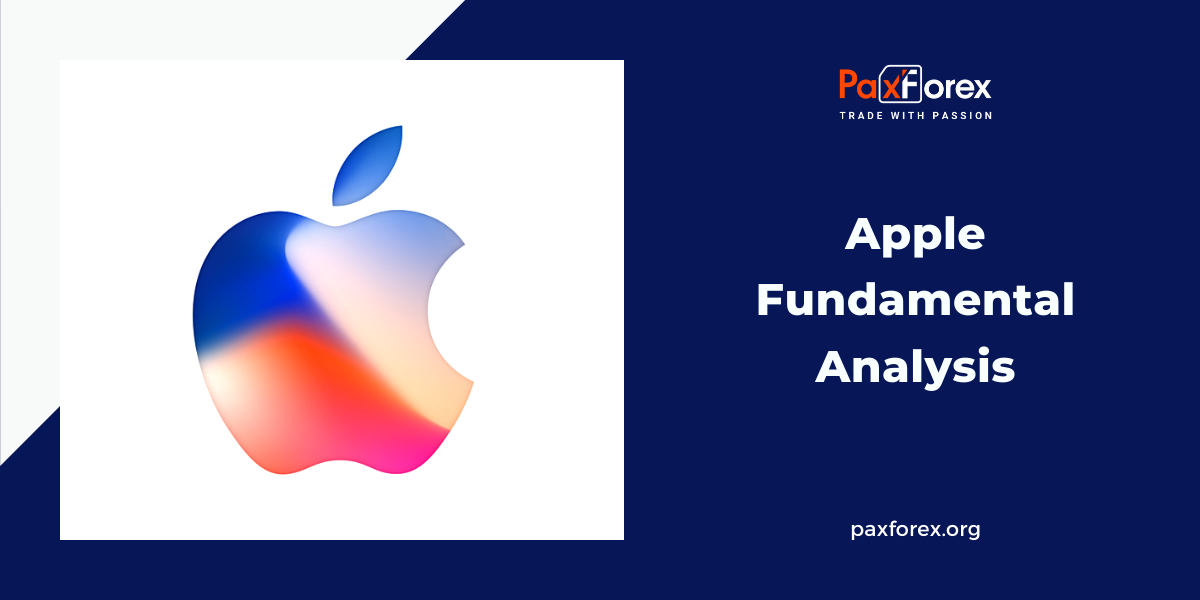
Source: PaxForex Premium Analytics Portal, Fundamental Insight
Recently, Apple captured attention with its most substantial product launch in nearly ten years. On February 2, the company unveiled the Apple Vision Pro, a virtual/augmented reality (VR/AR) headset referred to by Apple as a "spatial computer."
Powered by the same chip found in its MacBook Air, the Vision Pro boasts the capability to handle routine computing tasks like web browsing, word processing, video editing, and diverse entertainment applications.
The success of the headset remains uncertain, but Apple's current commitment of approximately 8% of its annual revenue to research and development, as indicated by this chart, suggests significant innovation. The last time this allocation was higher coincided with the tech giant's preparation for the launch of the first iPhone. This implies that Apple's current endeavors could lead to substantial developments over the next decade.
Despite encountering challenges in the past year, Apple's robust financial reserves and formidable brand instill confidence in its enduring success.
This analysis underscores why it may still be an opportune time to invest in Apple stock.
The past year has presented challenges for Apple, marked by macroeconomic headwinds that resulted in four consecutive quarters of revenue declines throughout 2023.
Breaking the streak, Apple reported a 2% year-over-year revenue increase to $120 billion in the first quarter of 2024, surpassing Wall Street forecasts by over $1 billion.
Despite this positive performance, investor concerns persist, particularly regarding Apple's iPhone business, reflected in a 3% year-to-date decline in its stock. While smartphone sales rose by 6% in Q1 2024, a 13% drop in China, Apple's third-largest market, added to the apprehension. The increased restrictions on iPhones in China pose a threat to the company's business, accounting for approximately 17% of its revenue.
Improvement in Chinese sales seems uncertain, especially with rising competition from rivals like Xiaomi and Huawei. However, potential growth in other regions could offset losses in China over the long term, especially as Apple gradually shifts its business reliance away from the iPhone. In Q1 2024, Apple's second-largest market, Europe, witnessed a 10% year-over-year revenue growth in product sales, while sales in Japan surged by 15%.
Despite recent obstacles, Apple's free cash flow increased by 10% to approximately $107 billion in the last year. This suggests that the impact of slowing Chinese sales on the company's overall financial health may not be as detrimental as perceived. Moreover, it underscores Apple's financial resilience, indicating its capacity to navigate current challenges and continue investments in other high-growth areas of technology.
Apple's recent investment in research and development reached just below $8 billion in the last quarter, reflecting a commitment to future innovation. While Apple's roadmap for the next decade remains unclear, indications from market trends and the launch of the Vision Pro headset suggest a deeper foray into artificial intelligence (AI), virtual/augmented reality (VR/AR), and digital services. The growth potential in these sectors may allow Apple to reduce its reliance on product sales, especially the iPhone, over the long term.
The AI market is anticipated to witness a compound annual growth rate (CAGR) of 37% through 2030, potentially exceeding $1 trillion. Simultaneously, Fortune Business Insights projects the VR market to grow at a CAGR of 31% during the same period. Apple's strong brand loyalty and substantial cash reserves position the company favorably to capitalize on the growth opportunities in both AI and VR/AR.
Furthermore, Apple's digital services, encompassing revenue from the App Store and subscription platforms like Apple TV+, Music, and iCloud, are emerging as the company's second-highest-earning segment, constituting about 20% of its overall revenue. This diversification is crucial as services growth has consistently outperformed the iPhone for over a year, with Q1 2024 showing an 11% year-over-year increase in revenue for the services segment compared to the iPhone's 6%.
While the fruition of Apple's investments may take time to reflect in its stock price, the present could be an opportune moment for long-term investors. Apple's stock, offering more value than some of its rivals, is perceived as a lower-risk option among "Big Tech" stocks. The chart illustrates Apple's forward price-to-earnings ratio (P/E) and price-to-free cash flow, both significantly lower than those of Microsoft and Amazon, reinforcing the notion that Apple's stock is trading at a more favorable value.
In conclusion, with a strategic expansion into AI, VR/AR, and digital services, Apple's stock presents an enticing opportunity for investors with a long-term perspective.
As long as the price is above 180.00, follow the recommendations below:
- Time frame: D1
- Recommendation: long position
- Entry point: 188.23
- Take Profit 1: 194.00
- Take Profit 2: 200.00
Alternative scenario:
If the level of 180.00 is broken-down, follow the recommendations below:
- Time frame: D1
- Recommendation: short position
- Entry point: 180.00
- Take Profit 1: 175.00
- Take Profit 2: 170.00













